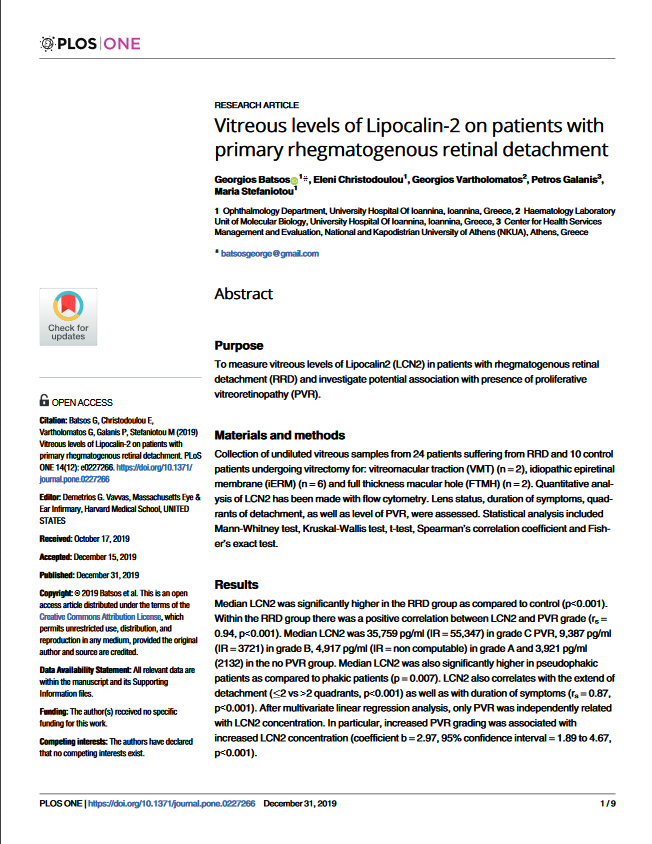11.07.2020
Vitreous Levels of Lipocalin-2 on Patients With Primary Rhegmatogenous Retinal Detachment
PLoS One, 2019
Our partner AimPlex leverages years of assay development expertise to offer comprehensive solutions in biomedical testing for multiplexed bead-based immunoassays. Founded in August 2011, the company is committed to developing and providing high-quality, cost-effective assay reagents for flow cytometry analyses. AimPlex immunoassay products employ existing flow cytometry analytical platforms for high-sensitivity detection. In the following notheworthing study conducted by Georgios Batsos et al., Lipocalin-2/LCN2/NGAL Human Analyte Kit, Group 8 was used to determine levels of Lipocalin-2 in undiluted vitreous core samples from participating patients.
Abstract
Purpose: To measure vitreous levels of Lipocalin2 (LCN2) in patients with rhegmatogenous retinal detachment (RRD) and investigate potential association with presence of proliferative vitreoretinopathy (PVR).
Materials and methods: Collection of undiluted vitreous samples from 24 patients suffering from RRD and 10 control patients undergoing vitrectomy for: vitreomacular traction (VMT) (n = 2), idiopathic epiretinal membrane (iERM) (n = 6) and full thickness macular hole (FTMH) (n = 2). Quantitative analysis of LCN2 has been made with flow cytometry. Lens status, duration of symptoms, quadrants of detachment, as well as level of PVR, were assessed. Statistical analysis included Mann-Whitney test, Kruskal-Wallis test, t-test, Spearman's correlation coefficient and Fisher's exact test.
Results: Median LCN2 was significantly higher in the RRD group as compared to control (p<0.001). Within the RRD group there was a positive correlation between LCN2 and PVR grade (rs = 0.94, p<0.001). Median LCN2 was 35,759 pg/ml (IR = 55,347) in grade C PVR, 9,387 pg/ml (IR = 3721) in grade B, 4,917 pg/ml (IR = non computable) in grade A and 3,921 pg/ml (2132) in the no PVR group. Median LCN2 was also significantly higher in pseudophakic patients as compared to phakic patients (p = 0.007). LCN2 also correlates with the extend of detachment (≤2 vs >2 quadrants, p<0.001) as well as with duration of symptoms (rs = 0.87, p<0.001). After multivariate linear regression analysis, only PVR was independently related with LCN2 concentration. In particular, increased PVR grading was associated with increased LCN2 concentration (coefficient b = 2.97, 95% confidence interval = 1.89 to 4.67, p<0.001).
Conclusion: A positive correlation between vitreous levels of LCN2 and PVR grading reveals a potential role in the pathogenesis and progression of PVR. Further studies could elucidate if LCN2 could be a therapeutic target.


